The Southern Pacific and later Santa Fe Transcontinental Route
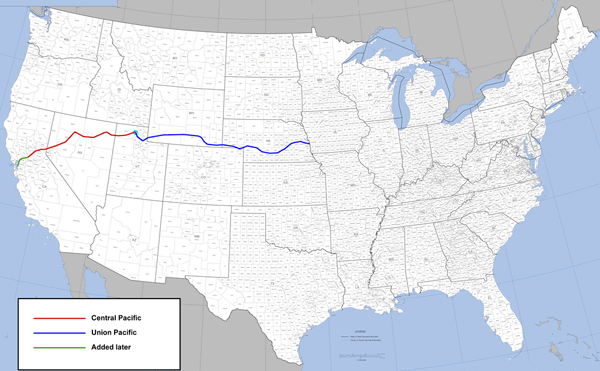
Transcontinental Route
It is a common urge when business entrepreneurs make a pile of money off of some investment that want to replicate that feat by doing the same thing or a similar thing again, and so the builders of the first transcontinental railroad immediately upon its completion began looking for places they could make another pile of money by building a railroad. Relevant here, the “Big Four” of California capitalism who had built the Central Pacific, Collis P. Huntington, Mark Hopkins, Governor Leland Stanford, and Charles Crocker began looking north and south for arenas in which they could replicate their success with the Central Pacific, and almost immediately they incorporated new companies and undertook construction both north and south of Sacramento. To the south, they extended rails first to San Francisco Bay, and then incorporated the Southern Pacific Railroad to try to replicate their Central Pacific success by building a southern transcontinental railroad. From San Francisco Bay their construction headed southward on two lines, one down the east shore of the San Francisco Peninsula and then southward generally paralleling the coast to Santa Barbara and Los Angeles, and a second line down the central valley and over difficult Tehachapi Pass to Mojave, which their construction crews reached in 1878. From there they resumed construction southeastward via Waterman (later renamed Barstow) and Daggett to the Colorado River at Needles in 1882, and in so doing they built the railroad line which today flanks the southern boundary of Mojave National Preserve between Fenner and a point about 4.5 miles east of Goffs.
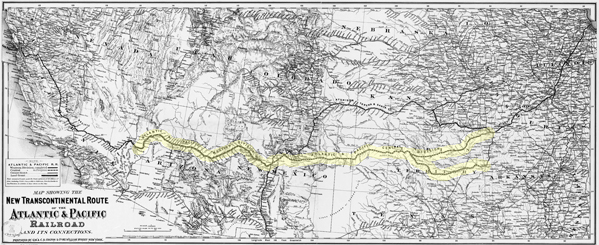
But in transcontinental railroad strategy, while the Southern Pacific’s principal effort towards building a southern transcontinental railroad through Texas and Louisiana to the Mississippi and the Gulf followed a different route eastward from Los Angeles to Yuma, this Southern Pacific line from Mojave to Needles was built at least in part as an attempt to block a competitor, the Atlantic & Pacific Railroad, Western Division, a part of the Santa Fe System, which was even then building westward from near Albuquerque, New Mexico Territory, across northern Arizona Territory, establishing towns such as Winslow, Flagstaff and Williams en route, toward the Needles from the east. When the A.& P. in fact reached Needles in 1883 and bridged the Colorado in 1884, it faced a competitor already there—the Big Four’s Southern Pacific. However, the Santa Fe crowd was not without its own leverage, and threatening to parallel the Southern Pacific all the way to San Francisco and by other means heading for Cajon Pass and Los Angeles, the Santa Fe forced the Southern Pacific to work out an agreement acceptable to both parties which among other things involved selling the Needles-Mojave line to the Santa Fe System, specifically to the Atlantic & Pacific Railroad, Western Division, and acquiring trackage rights over the Southern Pacific over Tehachapi Pass all the way to San Francisco so that the Santa Fe System would be able to offer through passenger traffic on that route, although in time the Santa Fe built and acquired its own line up through the Central Valley and around via Martinez to Richmond and Oakland on San Francisco Bay, with ferryboats across the Bay into San Francisco itself. In taking over this Southern Pacific line, especially the part between Needles and Barstow, the Santa Fe System achieved ownership of a transcontinental railroad from Chicago to the Pacific Coast eventually at Los Angeles and through trackage rights at San Francisco.
Thus the trackage which runs between Barstow and Needles south of Mojave National Preserve and, whose right-of-way from Fenner to a point east of Goffs actually forms the southern boundary of Mojave National Preserve, started out as a part of the Southern Pacific Railroad, but soon became trackage of the Atlantic & Pacific Railroad, Western Division, a part of the system owned by the Atchison, Topeka & Santa Fe Railroad. It was operated initially with the typical 4-4-0 American Standard, 2-6-0 Mogul and 2-8-0 Consolidation-type locomotives which most American railroads used in the 1880s, but in the search for new motive power, larger and ever large locomotives would be added. Among the first were a number of 4-8-0 types, not a common wheel arrangement, but when first put in service they had so many more wheels than their predecessors that A.& P. railroad men in the desert between Needles and Barstow and Cajon and Tehachapi Passes nicknamed them “tarantulas” after the many-legged spider seen often in those regions.
In the decade which encompassed the Silver Crash of 1893, the Atchison, Topeka & Santa Fe Railroad went into bankruptcy and when reorganized was renamed the Atchison, Topeka & Santa Fe Railway, and its subsidiary Atlantic & Pacific Railroad, Western Division, followed it into bankruptcy, was reorganized, and emerged renamed Santa Fe Pacific Railroad, which operated from the late 1890s until 1902, at which time it was absorbed into the Atchison, Topeka & Santa Fe Railway as a part of the “Coast Lines” of that company, headquartered in Los Angeles. The railroad continued under that name until 1996 when through a merger with the Burlington Northern (itself a merger of the Chicago, Burlington & Quincy, Great Northern, and Northern Pacific railroads), it became the Burlington Northern & Santa Fe Railway, a name changed further early in 2005 when the company dropped the name in favor of being known officially just by the initials, BN&SF Railway. Thus the trackage between Fenner and a point east of Goffs, which also runs along parallel to the southern boundary of Mojave National Preserve although some distance to the south of it west of Fenner, has been known by six different names under six different companies: Southern Pacific; Atlantic & Pacific, Western Division; Santa Fe Pacific Railroad; Atchison, Topeka & Santa Fe Railway; Burlington Northern & Santa Fe Railway; and finally, BN&SF Railway.
During its long history this line carried not only an impressive amount of transcontinental freight traffic, but operated a long list of famous passenger trains, starting with the California Limited and the Santa Fe De Luxe and in later years adding The Grand Canyon Limited, El Capitan, The Chief, and The Super Chief which, under Amtrak’s operation of passenger trains since 1971, continues today as an Amtrak train known as The Southwest Limited.
The Big Four
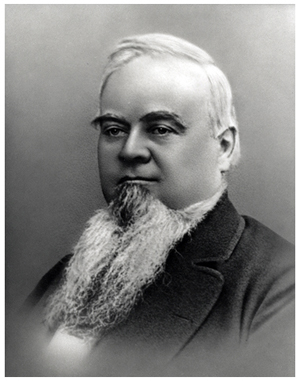
Charles Crocker
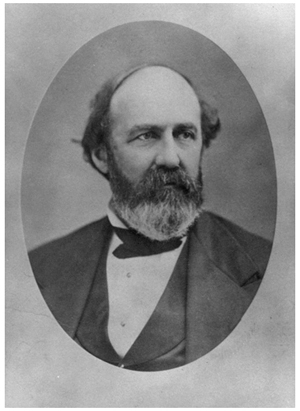
Collis P. Huntington
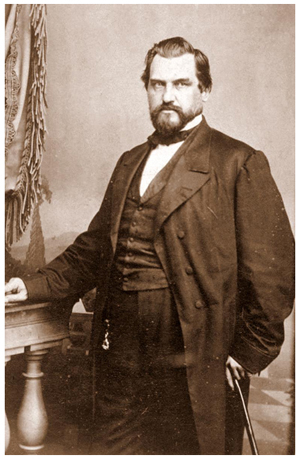
Leland Stanford
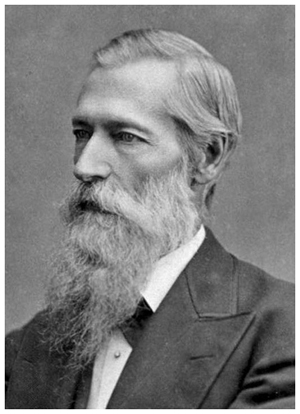
Mark Hopkins